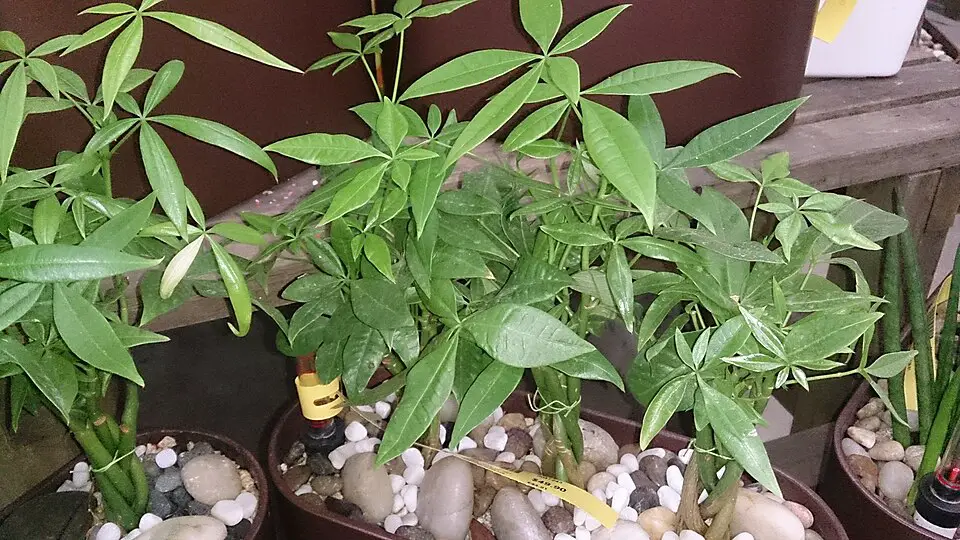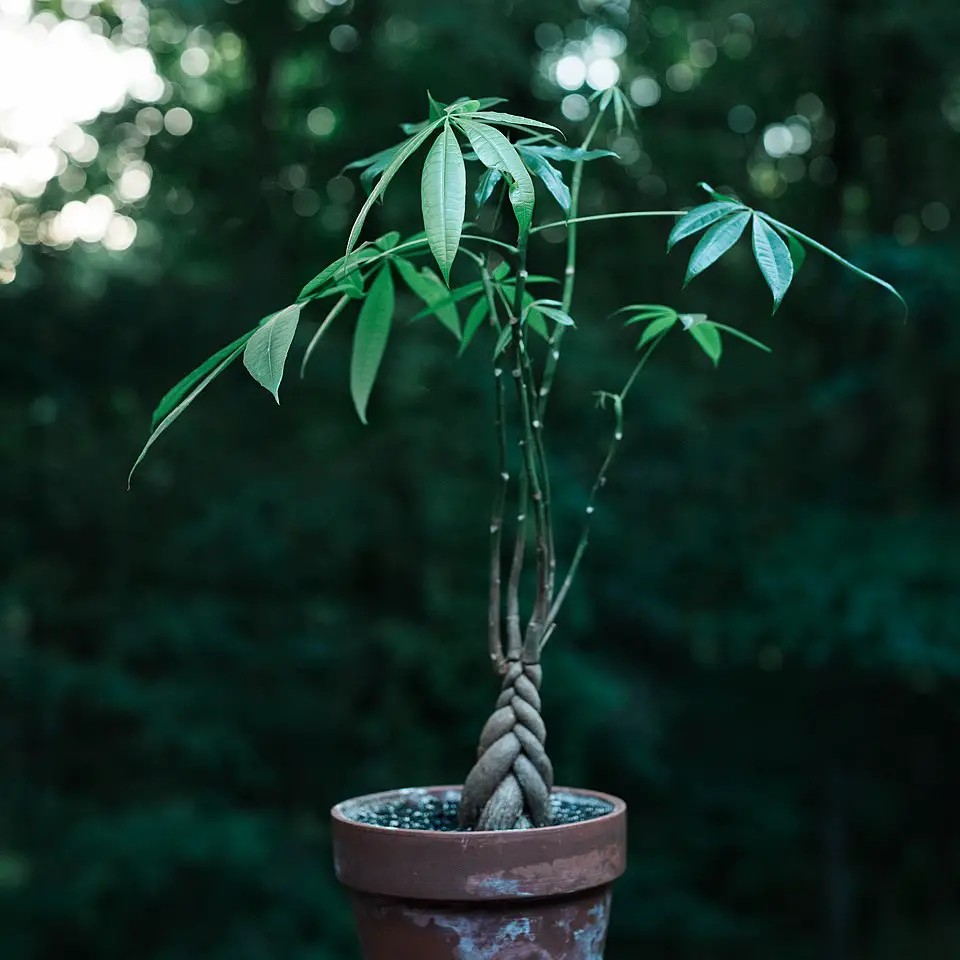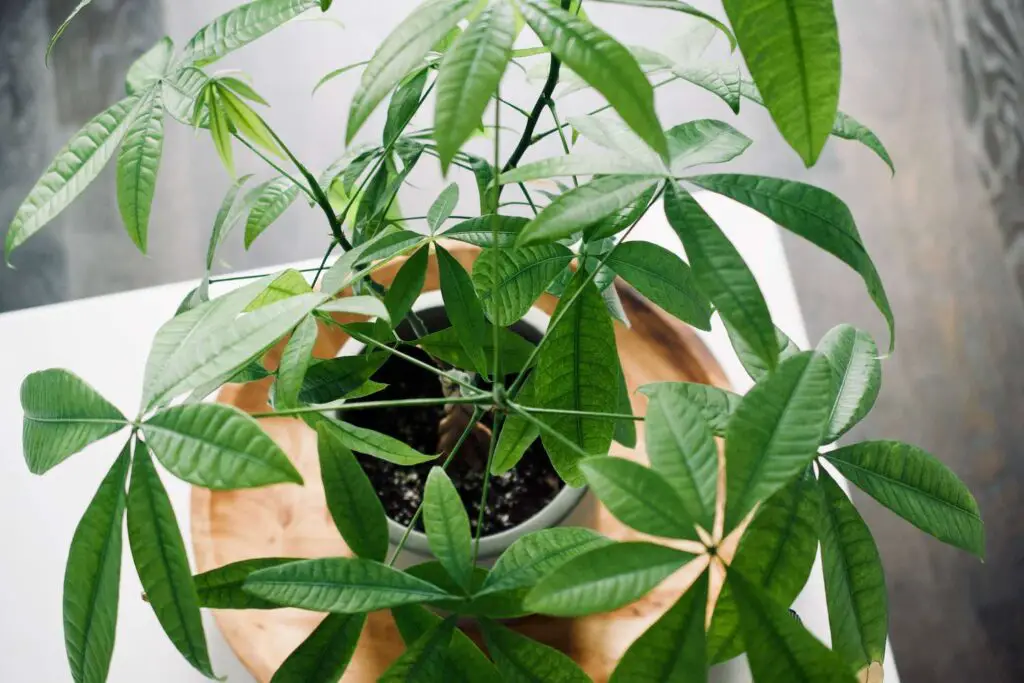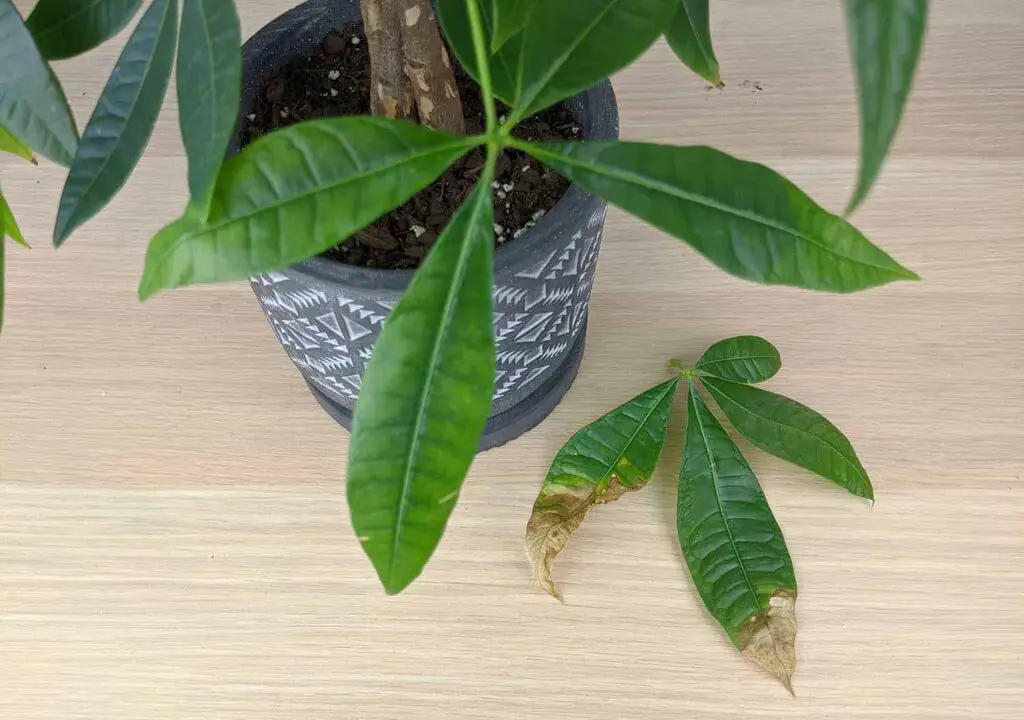The signs of an overwatered Money Tree include yellowing leaves, wilting, and root rot. Prevention involves proper watering techniques and ensuring adequate drainage. Recovery requires adjusting watering habits and, in severe cases, repotting the plant to save it from damage.
Understanding the Money Tree
The Money Tree, scientifically known as Pachira aquatica, is a popular houseplant known for its resilience and attractive braided trunk. This plant is often associated with good fortune and prosperity. Native to Central and South America, it thrives in humid environments and can grow quite tall, making it a favored choice for indoor spaces.

However, like any plant, the Money Tree can suffer from care mistakes, one of the most common being overwatering. Overwatering occurs when the roots sit in waterlogged soil for too long, depriving them of oxygen. It is essential for plant owners to recognize the signs of overwatering early to prevent severe damage.
Signs of Overwatering
Identifying the signs of an overwatered Money Tree is crucial for prompt intervention. Here are some key indicators to watch for:
- Yellowing Leaves: One of the first visible signs of overwatering is the yellowing of leaves. When roots are deprived of oxygen, they become stressed, leading to leaf discoloration.
- Wilting: Overwatered plants may appear wilted despite having sufficient moisture in the soil. This inconsistency occurs because roots cannot absorb water effectively.
- Soft or Mushy Stems: The stems of an overwatered Money Tree can become soft or mushy. This condition indicates that the plant is suffering from root rot.
- Foul Odor: An unpleasant smell emanating from the soil may indicate decomposing roots due to excessive moisture.
- Root Rot: The most severe consequence of overwatering is root rot, where roots decay and turn black or brown. This condition can be fatal if not addressed quickly.
Preventing Overwatering
Prevention is always better than cure when it comes to plant care. Here are some effective strategies to prevent overwatering your Money Tree:

- Check Soil Moisture: Always check the soil moisture before watering. Insert a finger about an inch into the soil. If it feels dry, it’s time to water.
- Use Well-Draining Soil: Ensure you use a potting mix designed for houseplants that allows excess water to drain away easily.
- Choose the Right Pot: Use pots with drainage holes to facilitate water escape. Avoid pots that retain excessive moisture.
- Avoid Watering Schedule: Instead of sticking to a strict watering schedule, base your watering on the plant’s needs and environmental conditions.
Recovery from Overwatering
If you notice signs of overwatering in your Money Tree, immediate action is necessary to recover the plant. Here are steps you can take:
- Stop Watering: Immediately halt watering to prevent further stress on the plant.
- Inspect Roots: Carefully remove the plant from its pot and check the roots for signs of rot. Healthy roots will be firm and white.
- Trim Affected Roots: If you find black or mushy roots, use sterilized scissors to trim away the affected areas.
- Repot if Necessary: Consider repotting your Money Tree in fresh, dry soil if a significant portion of the root system has rotted.
- Provide Proper Care Post-Recovery: After recovery actions, monitor the plant closely. Adjust your care routine to avoid future overwatering.
By understanding the signs of overwatering and taking preventive measures, you can help your Money Tree thrive as a beautiful addition to your home or office space.
Understanding the Watering Needs of a Money Tree
To effectively care for a Money Tree, it is essential to understand its watering requirements. This plant has specific needs based on its natural habitat. In the wild, it thrives in humid, tropical environments where rainfall is frequent but does not linger in waterlogged conditions.

When caring for a Money Tree indoors, consider the following factors that influence its watering needs:
- Humidity Levels: Money Trees prefer high humidity. If your home is dry, especially in winter, this can impact the plant’s water intake.
- Light Conditions: The amount of light the plant receives affects its growth rate and, consequently, its water needs. More light often means faster growth and higher water consumption.
- Temperature: Warmer temperatures generally increase evaporation rates, which may require more frequent watering.
- Pot Size: The size of the pot can also affect how quickly the soil dries out. Smaller pots dry out faster than larger ones.
Watering Techniques for Optimal Growth
Proper watering techniques are vital for maintaining the health of your Money Tree. Here are some effective methods to ensure your plant receives the right amount of moisture:
- Bottom Watering: This technique involves placing the pot in a tray of water. The soil absorbs moisture from the bottom up, preventing over-saturation of the top layer.
- Watering Can with a Narrow Spout: Using a watering can with a narrow spout allows for precise watering. This method reduces the risk of overwatering by targeting the soil directly.
- Moisture Meter: A moisture meter can help you gauge soil moisture levels accurately. It provides an easy way to determine when to water without guesswork.
Signs of Stress in Money Trees
In addition to overwatering symptoms, Money Trees can show signs of stress due to other factors. Recognizing these signs early can help you take corrective measures before the situation worsens. Here are some common stress indicators:
- Leaf Drop: If leaves start dropping off suddenly, it may indicate environmental changes or stress from overwatering or underwatering.
- Pest Infestation: Yellowing leaves with spots may suggest pests like spider mites or aphids. Regularly inspect the undersides of leaves for early detection.
- Stunted Growth: If your Money Tree stops growing or shows slow growth, it might be a sign of nutrient deficiencies or improper lighting conditions.
The Role of Soil in Preventing Overwatering
The type of soil used for your Money Tree plays a significant role in preventing overwatering. A well-draining soil mix allows excess water to escape easily, reducing the risk of root rot. Here are some key components to consider when selecting soil:

- Cactus Mix: This type of mix often contains sand and perlite, which help improve drainage while retaining some moisture.
- Pottling Mix with Perlite: Standard potting mix with added perlite can enhance aeration and drainage properties.
- Avoid Heavy Soils: Heavy soils that retain too much moisture should be avoided, as they can lead to waterlogged conditions.
Repotting Your Money Tree
If your Money Tree is showing signs of overwatering or root issues, repotting may be necessary. Repotting can refresh the soil and provide better drainage. Here are steps to follow when repotting:
- Select a New Pot: Choose a pot that is one size larger than the current pot. Ensure it has drainage holes at the bottom.
- Prepare Fresh Soil: Use a well-draining potting mix as discussed earlier.
- Carefully Remove the Plant: Gently take the Money Tree out of its pot. Avoid damaging the roots as you do this.
- Inspect and Trim Roots: Check for any rotten or damaged roots and trim them away using sterilized scissors.
- Add Soil to New Pot: Place some fresh soil at the bottom of the new pot and position the plant in the center before adding more soil around it.
By understanding these aspects of watering, soil management, and stress signs, you can create an optimal environment for your Money Tree to thrive while avoiding common pitfalls such as overwatering.
2>Common Mistakes to Avoid with Money Trees Caring for a Money Tree can be rewarding, but several common mistakes can lead to issues like overwatering. By being aware of these pitfalls, you can better ensure the health of your plant. Here are some mistakes to avoid: Money Trees have different care needs throughout the seasons. Understanding these seasonal changes can help you maintain optimal health for your plant. Here are some tips for each season: Spring is a time of growth for Money Trees. As temperatures warm up, your plant will benefit from increased light and moisture. During summer, Money Trees thrive in bright, indirect light but still require careful attention to watering. As temperatures begin to drop in autumn, your Money Tree’s growth may slow down. Winter poses unique challenges for indoor gardening. Reduced light and humidity can affect your Money Tree. >Keeping an eye on your Money Tree’s health is vital for early detection of pests and diseases. Here are some common pests that can affect Money Trees: Regular monitoring for these pests will allow you to take action before they cause significant damage. Additionally, maintaining good air circulation around your plant can help reduce pest problems. Caring for a Money Tree requires attention and diligence. By understanding watering needs, avoiding common mistakes, adapting care through seasons, and monitoring for pests, you can enjoy a healthy and thriving plant in your home. Once you have established a routine for watering, repotting, and pest management, it is essential to consider the long-term care of your Money Tree. A well-cared-for Money Tree can live for many years and grow to be quite large. Here are some long-term strategies to keep your plant thriving: >Money Trees can live for many years with proper care. Some plants can thrive for over a decade, becoming not just a decorative item but a lasting companion. Understanding their lifespan can help you set realistic expectations and goals for your plant. While the average lifespan can be around 10 to 15 years, some factors may influence longevity: In summary, caring for a Money Tree involves understanding its specific needs regarding watering, light, humidity, and soil type. Recognizing the signs of overwatering and other stress indicators is essential for maintaining a healthy plant. With preventive measures and proper care techniques, you can prevent issues like root rot and pest infestations. Your efforts in nurturing a Money Tree will not only beautify your space but also provide a sense of tranquility and connection to nature. By implementing seasonal care strategies, avoiding common mistakes, and being proactive about pest control, you are well-equipped to enjoy the benefits of this resilient houseplant. A thriving Money Tree can symbolize prosperity and good fortune, making it a meaningful addition to any home. As you continue your journey in indoor gardening, remember that patience and observation are key. Each plant has its personality and unique requirements, so take the time to learn what works best for your Money Tree. Investing time and effort into caring for your Money Tree will yield rewarding results, creating a lush green focal point in your home that stands the test of time.Seasonal Care Tips for Money Trees
Spring
Summer
Autumn
Winter
Pest Control and Health Monitoring
Long-Term Care Strategies for Your Money Tree
Understanding the Lifespan of a Money Tree
Final Thoughts
